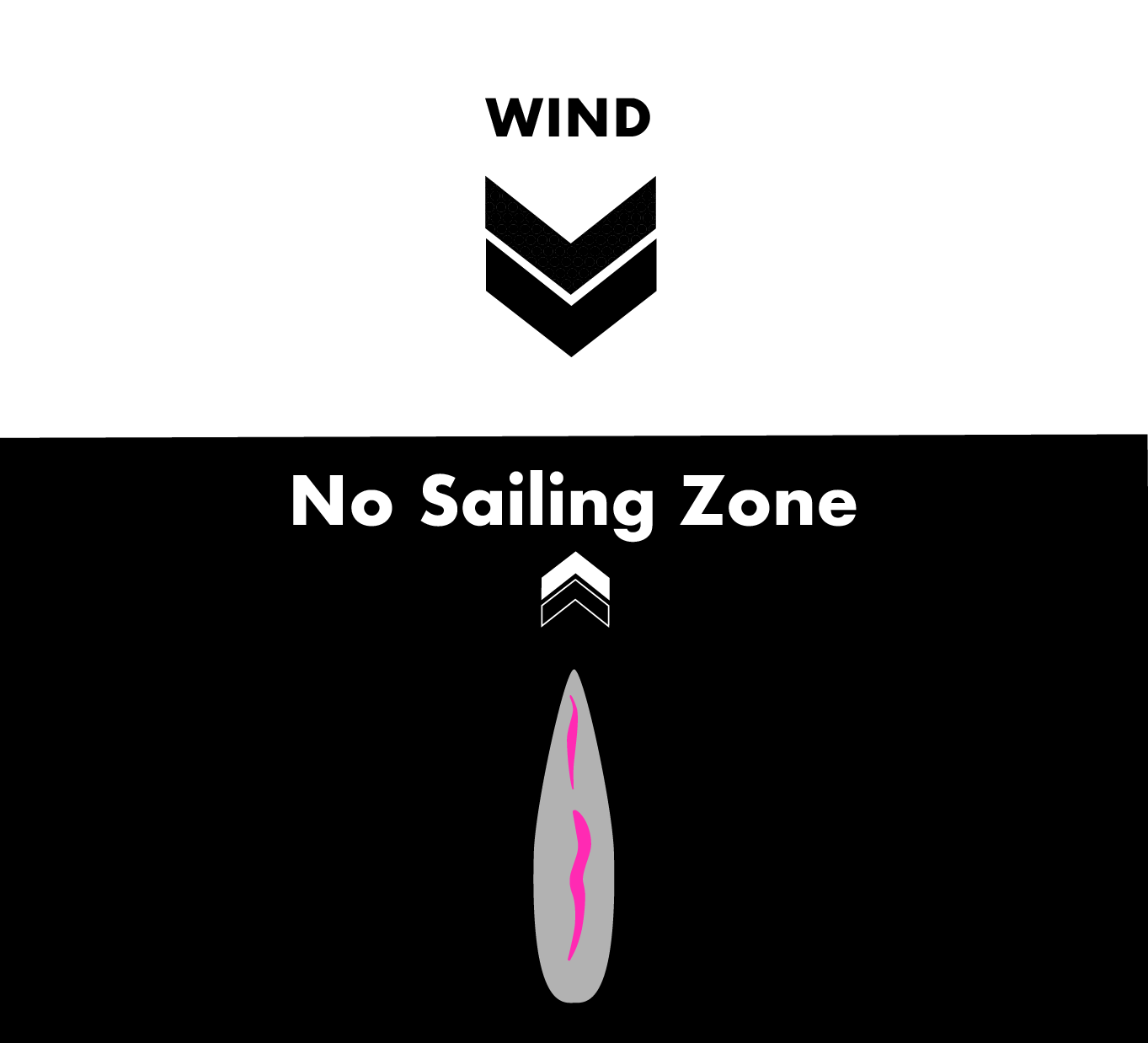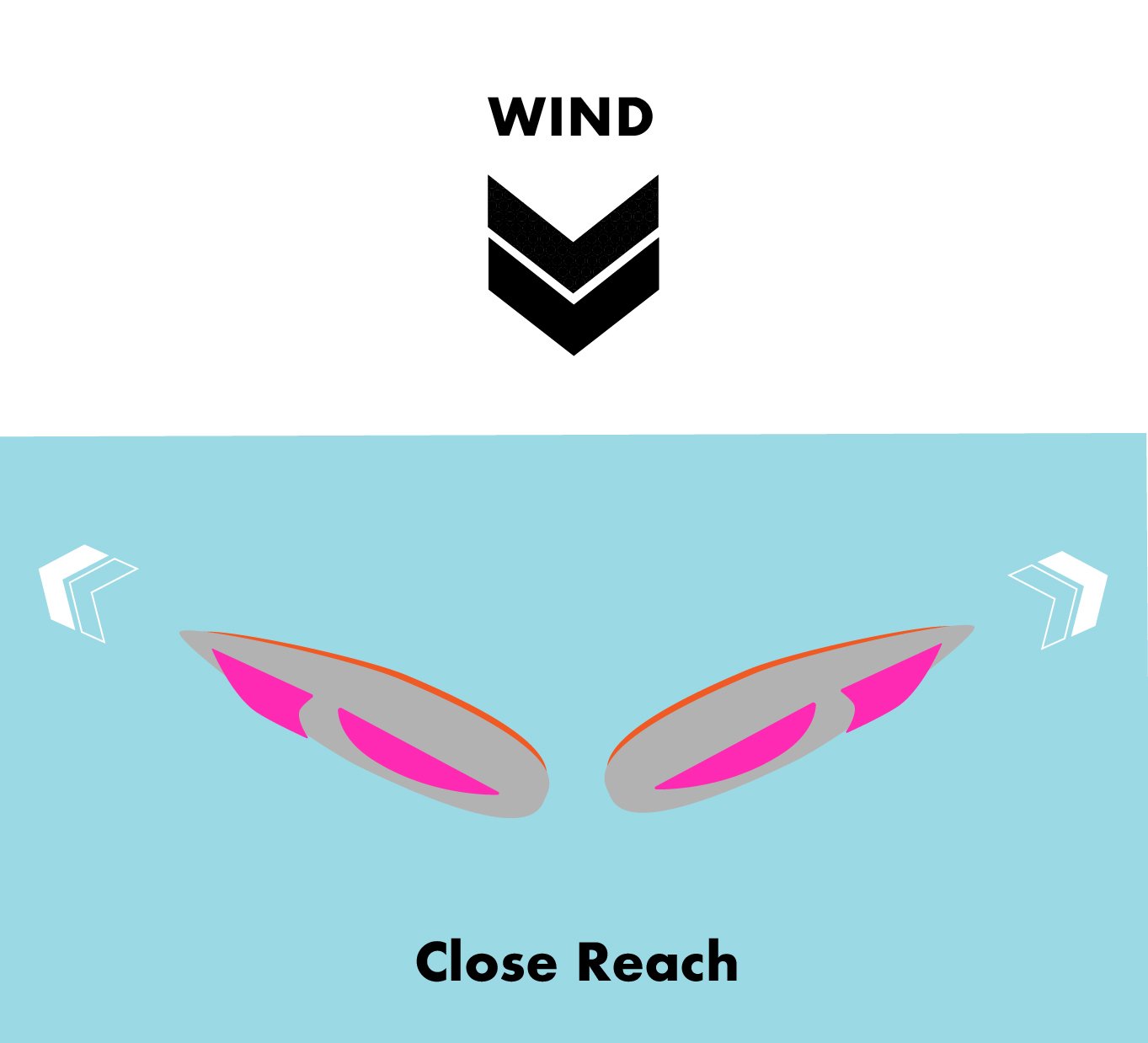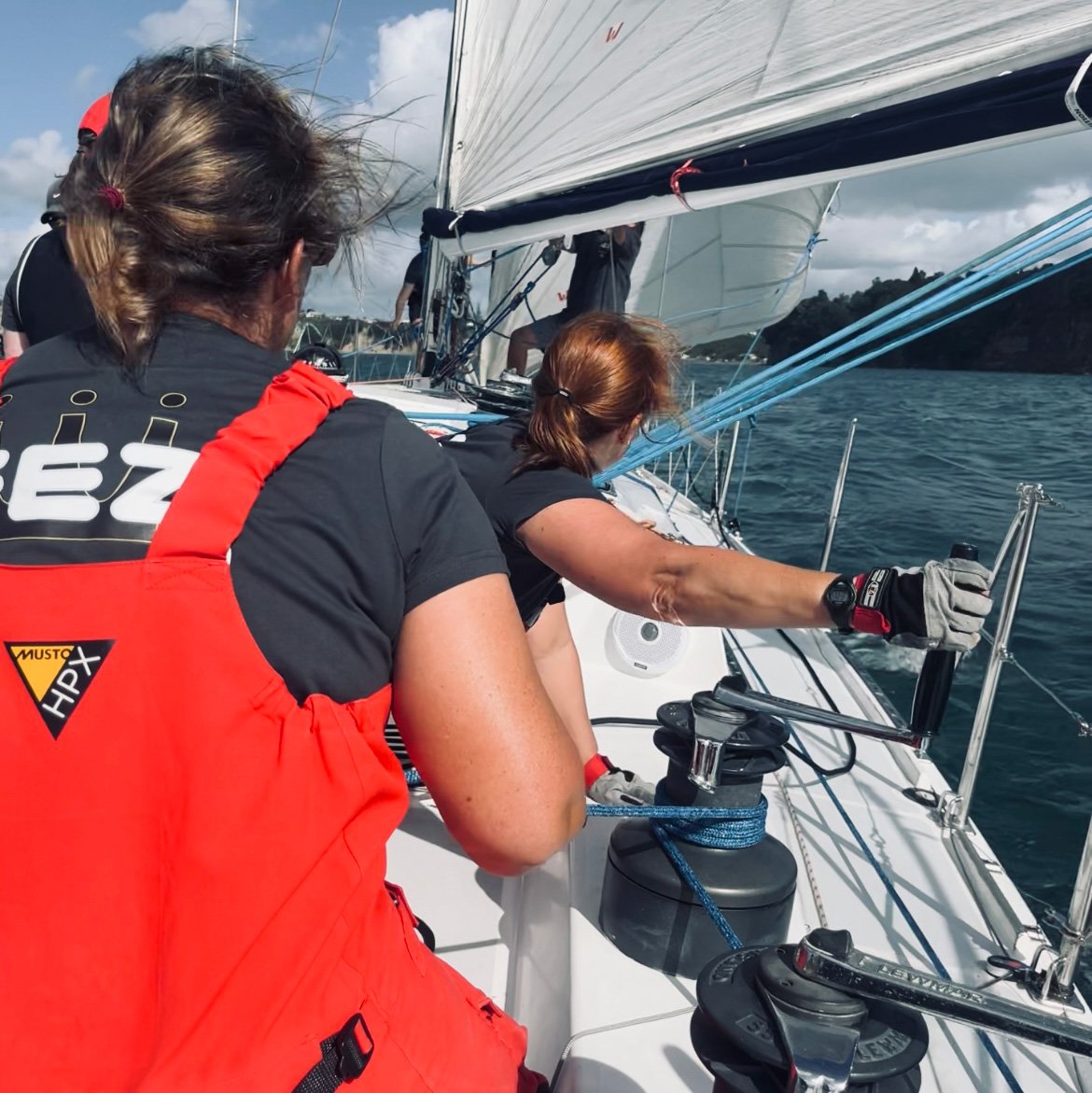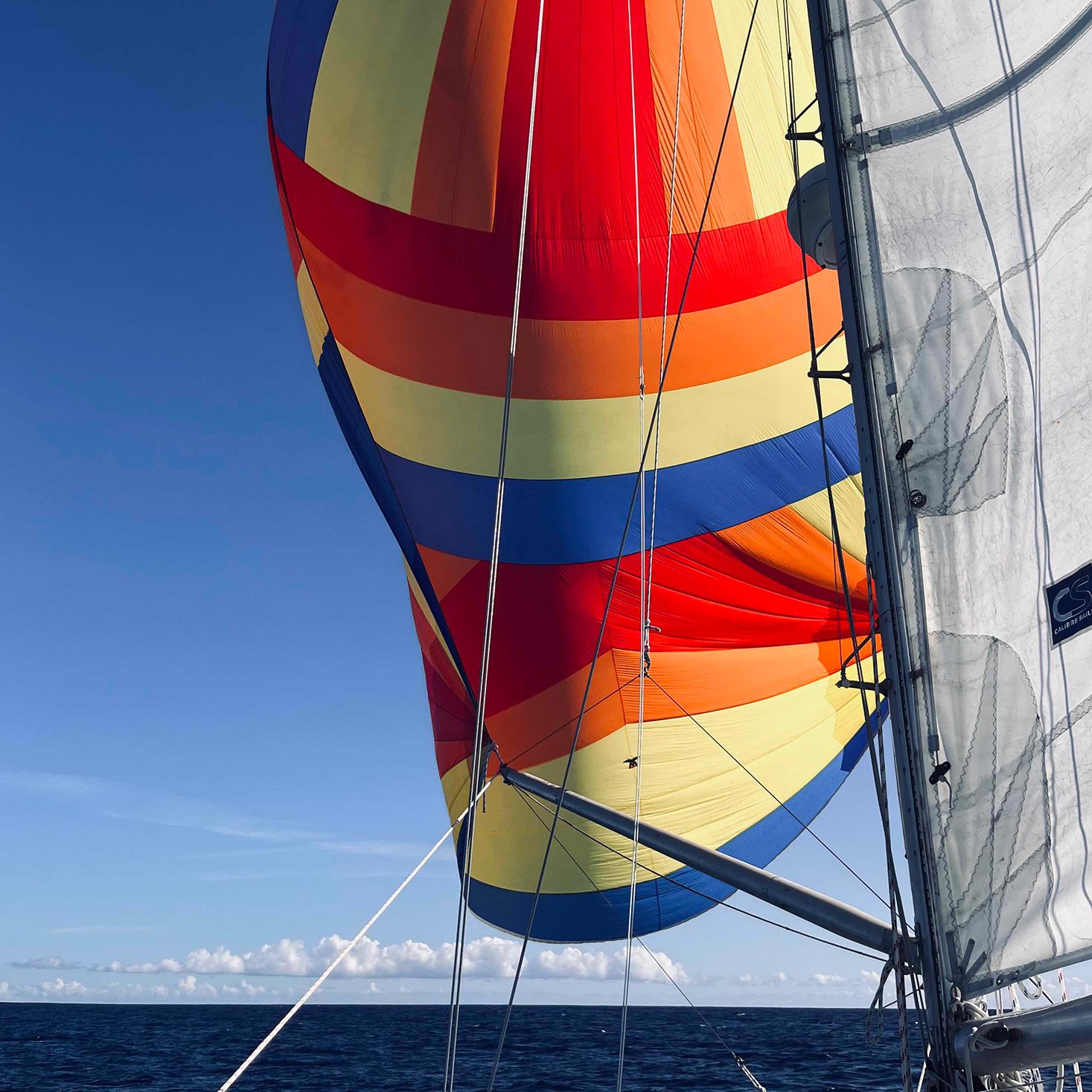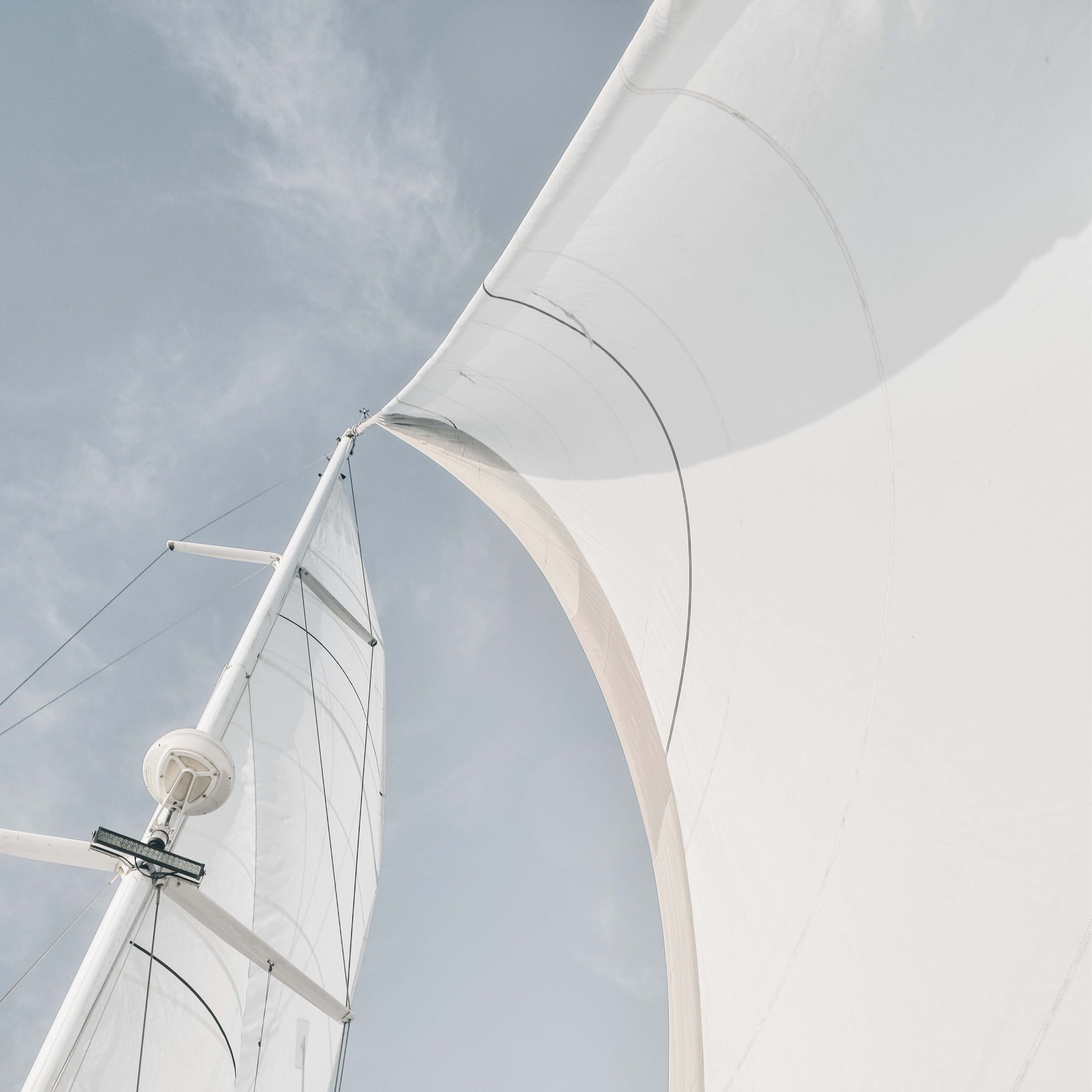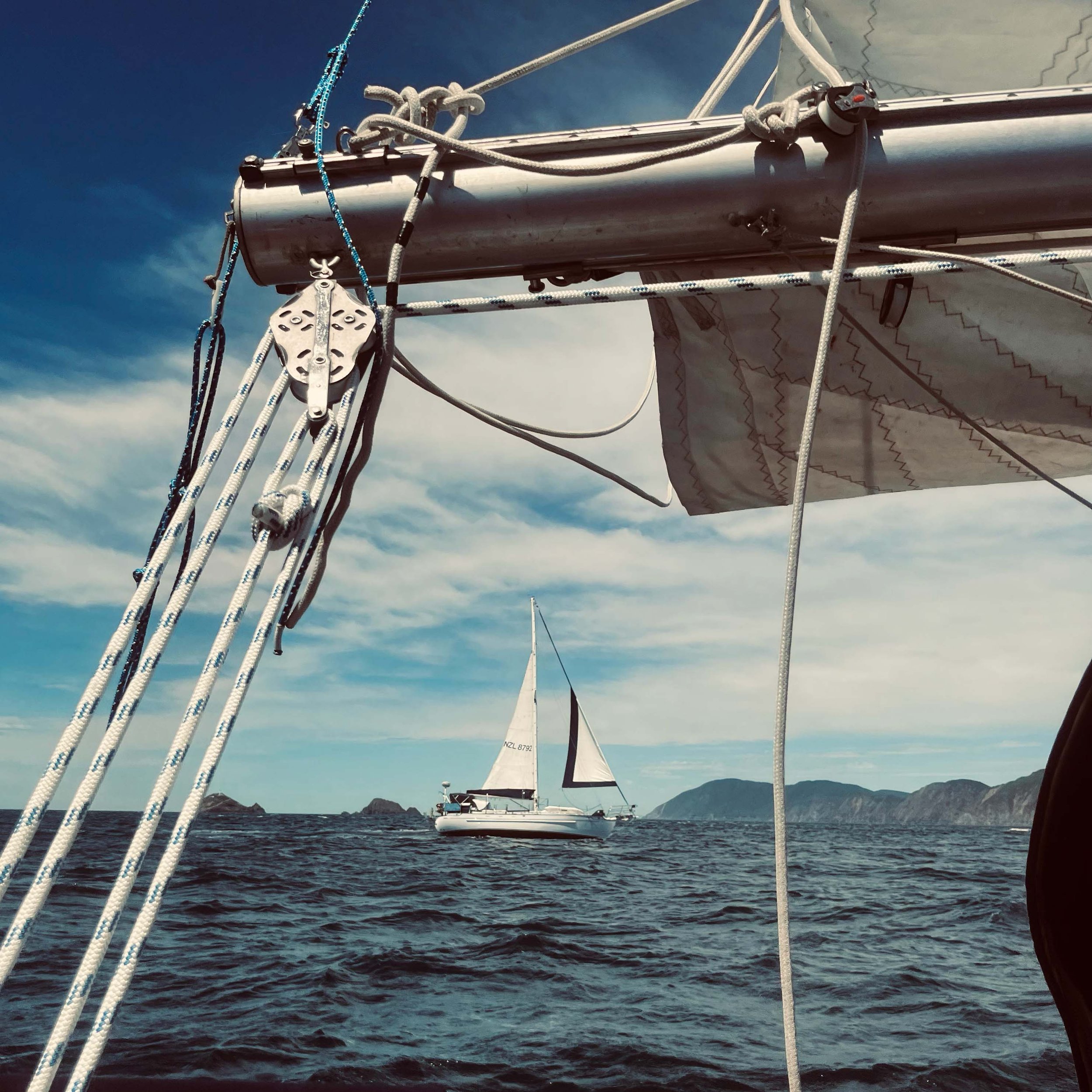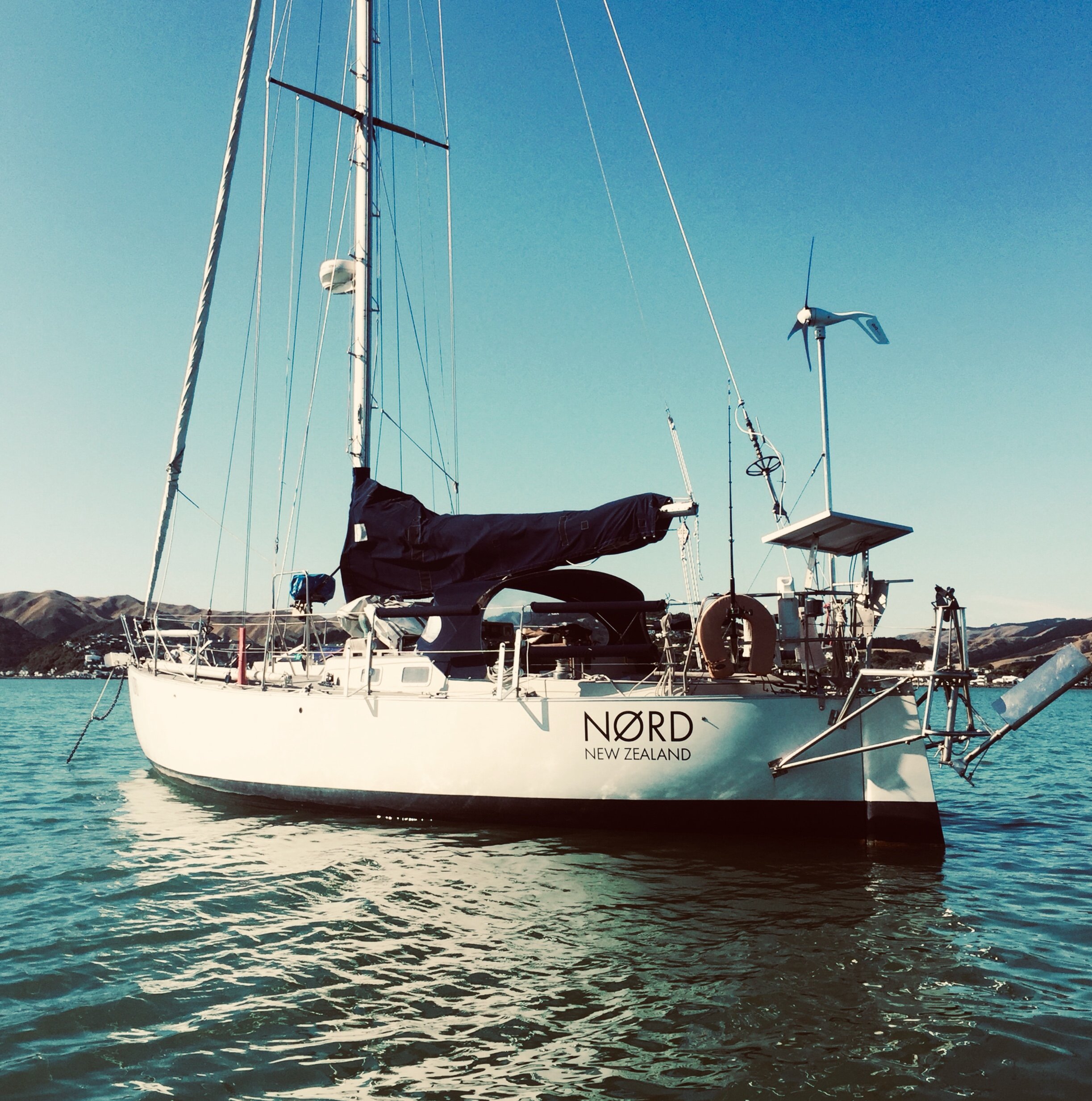An Easy Guide to Points of Sail
Saltwater Journal is reader supported.
When you buy through our links we may earn an affiliate commission (at no extra cost to you)
The wind blows wherever it likes, so you need to know how to capture its energy in your boat sails to get you from A to B, as easily as possible. While you can’t control the true direction of the wind, you can control the position of your boat and sails in relation to it. This relationship between sail boat direction and wind is known as the point of sails. Knowing these points is crucial for effective and safe manoeuvring and control of your sailboat and optimizing its speed and direction.
Points of Sail sounds technical, do I need to know these?
Put it this way, understanding the points of sail, is just like learning to drive a car and understanding how turning the steering wheel affects your vehicle relative to the road. So, yes you need to know this! It can definitely take time to get your head around it, learn the sail angles and practice trimming. The good news, is that with sailing time on the water, it’ll become second nature to you. In this article, we’ll keep things as easy as possible to get you started.
Here’s four reasons why knowing points of sail is so important:
Maneuvering: By understanding the points of sail, you can adjust the position and angle of your sails to maximize your boat's speed and efficiency. Different points of sail require different sail trim and steering techniques.
Windward and leeward sailing: Knowing the points of sail helps you determine whether you are sailing closer to the wind (windward) or away from the wind (leeward). This knowledge is crucial for executing manoeuvres like tacking (changing direction when sailing upwind) and jibing/gybing (changing direction when sailing downwind).
Safety: Understanding the points of sail allows you to anticipate changes in wind direction and make appropriate adjustments. It helps you avoid sailing too close to the wind, which can result in capsizing or losing control of the boat.
Racing and performance: In competitive sailing, optimizing the boat's speed and performance is essential. By understanding the points of sail, you can make tactical decisions to gain an advantage over your competitors, such as choosing the best route or taking advantage of wind shifts.
Let’s look at the Points of Sail
The Points of Sail are called the same on either a Port Tack or Starboard Tack (A starboard tack is when the wind is blowing from the starboard/right side of the vessel, while a port tack is when the wind is blowing from the port/left side of the vessel).
Sailing into the wind will cause your sails to ‘luff’ or flap madly, like the mainsail shown here
The No-Sailing Zone/Into the wind
The "no-sailing zone" is the area directly into the wind where sailboats cannot effectively sail. This zone is approximately 45 degrees on either side of the wind direction. Attempting to sail directly into the wind will cause your sails to luff, losing power and momentum. It’s difficult to come about or tack either way — so it’s also known as being ‘In Irons’. It is important to avoid this zone when choosing your direction — unless you’re raising or lowering a mainsail, in which case you point into the wind for this to be done, and then bear away again.
Sailing close-hauled
Close Hauled
Pull your sails in nice and tight.
Close-hauled is the point of sail closest to the wind. Sailors set their sails at a tight angle to catch the wind effectively. To sail close-hauled, position your sailboat at an angle of 30-45 degrees to the wind direction. The angle of the no-sail zone (ability to sail closest to the wind) varies for different boats. This point of sail allows you to sail as close to the wind as possible while maintaining forward momentum.
Close Reach
Let the sails out a bit more than when close-hauled.
A close-reach is a point of sail where the boat is sailing at an angle slightly away from the wind. In a close-reach, the boat's course is neither directly upwind nor perpendicular to the wind but falls in between these two points. A close-reach is often considered an efficient and comfortable point of sail, offering a good combination of speed and stability. It allows the boat to make significant progress toward its destination while maintaining a manageable heel angle and minimal weather helm (boat rounding up/turning toward the wind).
Beam Reach
Let your sails halfway out.
The beam reach point of sail is perpendicular to the wind direction. Sailors steer their vessels at a 90-degree angle to the wind, with the sails out halfway. This point of sail offers an optimal balance between speed and stability, making it ideal for leisurely cruising and enjoying the breeze.
Broad Reach
Let your sails out even more.
The broad reach point of sail occurs when the wind is blowing from behind the boat. Sailors adjust their course so that the wind is coming from 120-150 degrees off the bow. At this point, the wind fills the sails from behind, pushing the boat forward. It is essential to be cautious and maintain control while sailing downwind to avoid accidental jibing (where a wind shift catches the sail set well out to one side of the boat, and suddenly swings the boom dangerously across to the other side).
Spinnaker sail set for downwind sailing
Downwind/Running
Set your sails goosewinged (wing on wing) or fly the spinnaker sail.
Downwind or running is the point of sail when the wind is directly behind the boat. Sailors position their jib and mainsail on opposite sides of the boat to allow the wind to fill the sails from behind. A symmetrical spinnaker can also be set to sail dead downwind. This point of sail offers exhilarating speed but requires caution to prevent accidental jibing and the boat can be less stable and more rolly. Maintain a safe distance from other vessels and be prepared to make necessary adjustments.
Tacking and Jibing (Gybing)
Tacking and jibing are essential maneuvers for changing the direction of your boat while sailing. Tacking involves turning the bow through the wind, while jibing involves turning the stern. Mastering these maneuvers allows you to transition smoothly between different points of sail, enabling you to navigate efficiently in various wind conditions.
Join a sailing club and practice the points of sail out on the water
FAQs
What’s the best way to learn the points of sail well?
Study the theory
Reading this is a great start! Study the point of sail illustrations above, and practice out on the water.
Join a sailing course or club
Practical experience is invaluable when it comes to learning points of sail. Consider joining a sailing course or club where you can receive hands-on instruction from experienced sailors. They can guide you through the various points of sail, teach you the necessary techniques, and provide real-life examples to solidify your understanding.
Go sailing
The best way to learn points of sail is to go sailing yourself. If possible, find opportunities to sail on different types of sailboats and in various wind conditions. Practice adjusting the sails, steering the boat, and observing how the boat's behavior changes with each point of sail. Pay attention to the wind direction, sail trim, and the boat's response to your adjustments.
Remember that learning points of sail takes time and practice. Be patient with yourself and gradually build your knowledge and experience. It's also helpful to review and reinforce your understanding periodically to ensure that you retain the knowledge effectively.
What’s the best point of sail?
Determining the "best" point of sail depends on various factors, including the type of sailboat, wind conditions, your objectives, and personal preferences. Each point of sail offers its own advantages and considerations. Here's a brief overview of four different points of sail and their potential benefits:
Close-hauled: This point of sail, sailing as close to the wind as possible, allows you to make progress against the wind direction. It's ideal for beating upwind or when you need to reach a destination in the opposite direction of the wind. Close-hauled provides good speed and the ability to tack efficiently.
Beam Reach: Sailing perpendicular to the wind, the beam reach point of sail offers a balanced combination of speed and stability. Typically this is the fastest and easiest point of sail. This means, it’s many sailor’s favourite! It allows for comfortable cruising and is often preferred for long-distance journeys. You have good control over the boat, and it can be a relaxing point of sail to enjoy the surroundings.
Broad Reach: Sailing with the wind coming from behind, the broad reach point of sail provides a sense of freedom and a chance to catch the wind's full power. It offers increased speed and can be thrilling, especially in stronger winds. However, it requires attention to prevent accidental jibing, and downwind navigation techniques must be applied.
Running: Sailing directly downwind with the wind at your back, the running point of sail offers excellent speed potential. It's particularly advantageous in light wind conditions. However, running can be challenging in stronger winds as it increases the risk of accidental jibing. Caution and proper sail trim are essential to maintain control and avoid dangerous situations.
To determine the best point of sail for your situation, consider factors such as wind strength and direction, your sailing goals, the capabilities of your sailboat, and your comfort level. Remember that experience and practice play a significant role in developing a feel for different points of sail and learning how to optimize your boat's performance in various conditions.
The "best" point of sail ultimately depends on your specific circumstances. If you're racing, the optimal point of sail will vary depending on the wind angle, your competitors, and the course layout. For cruising, it often comes down to personal preference, the destination you want to reach, and the conditions you feel comfortable sailing in. Waiting for the right conditions/wind direction can make a sailing trip far more enjoyable. A good Beam Reach is hard to beat!




